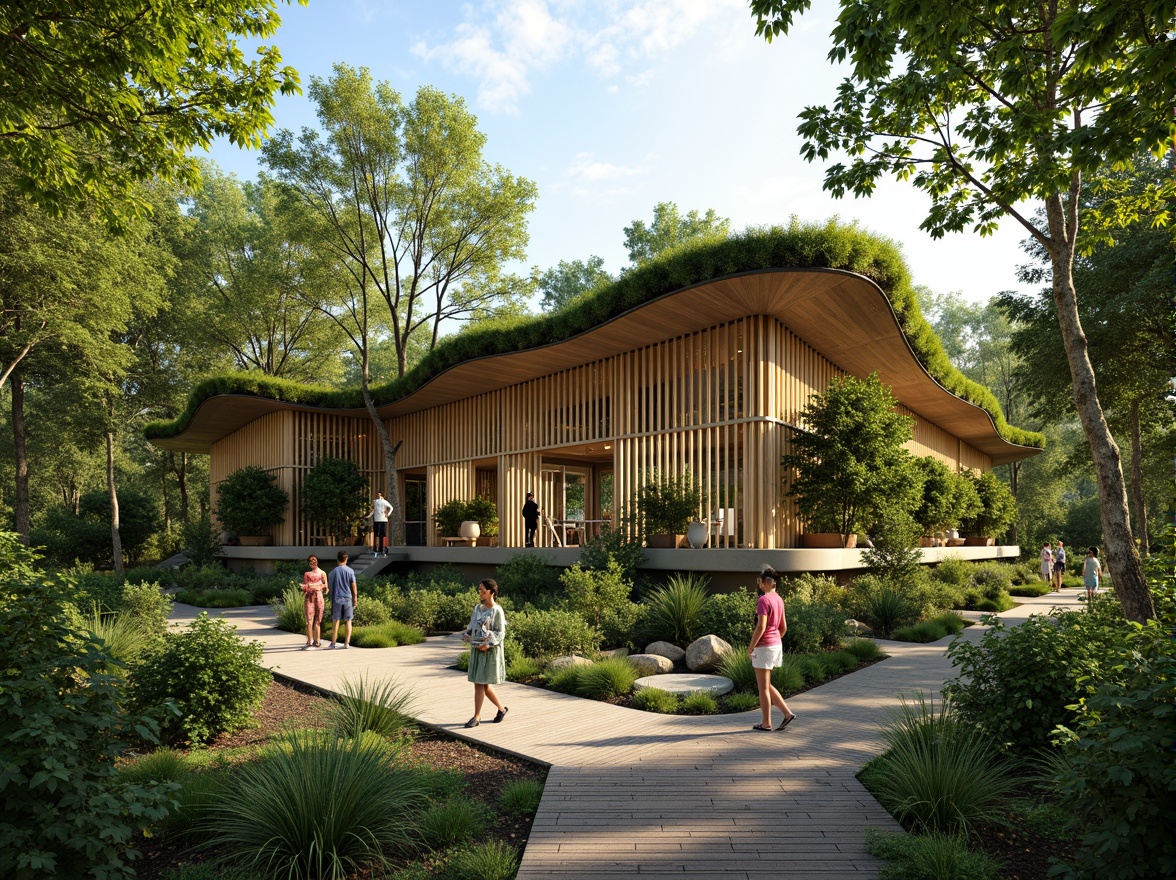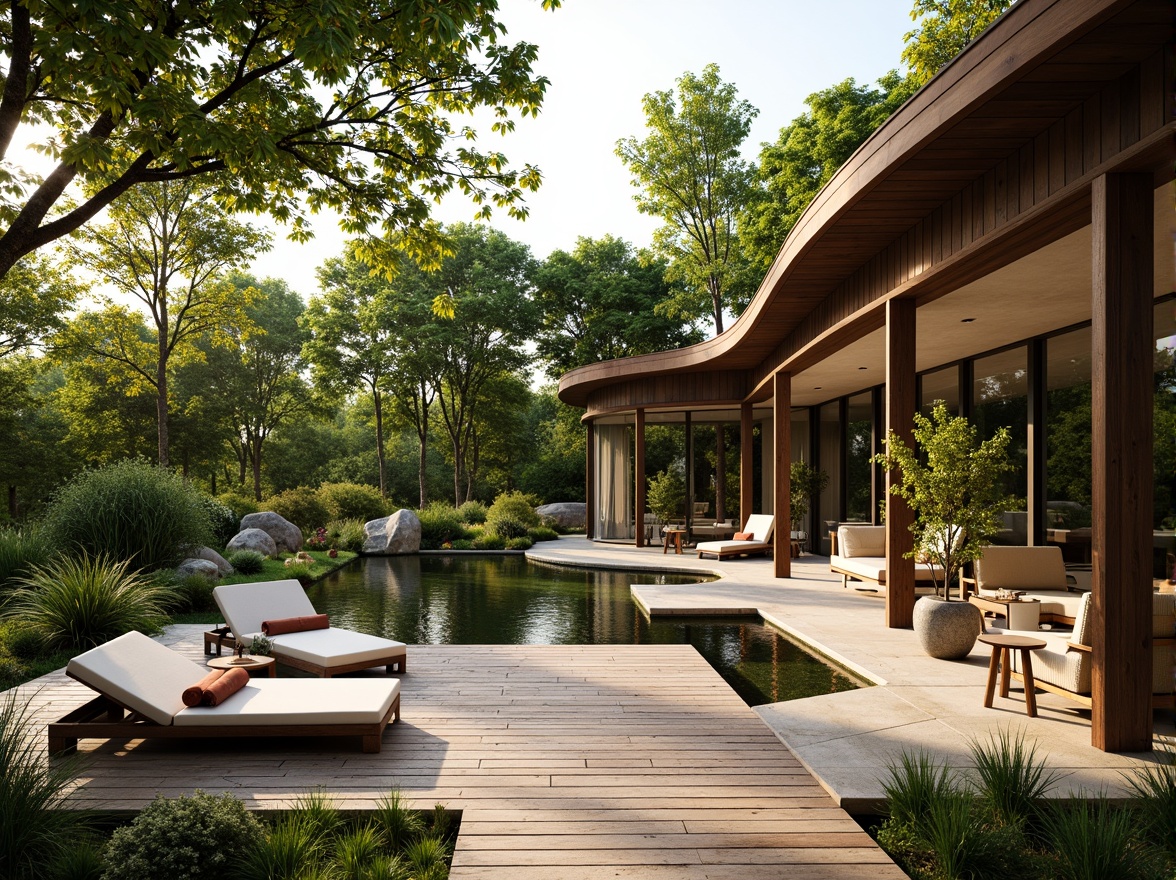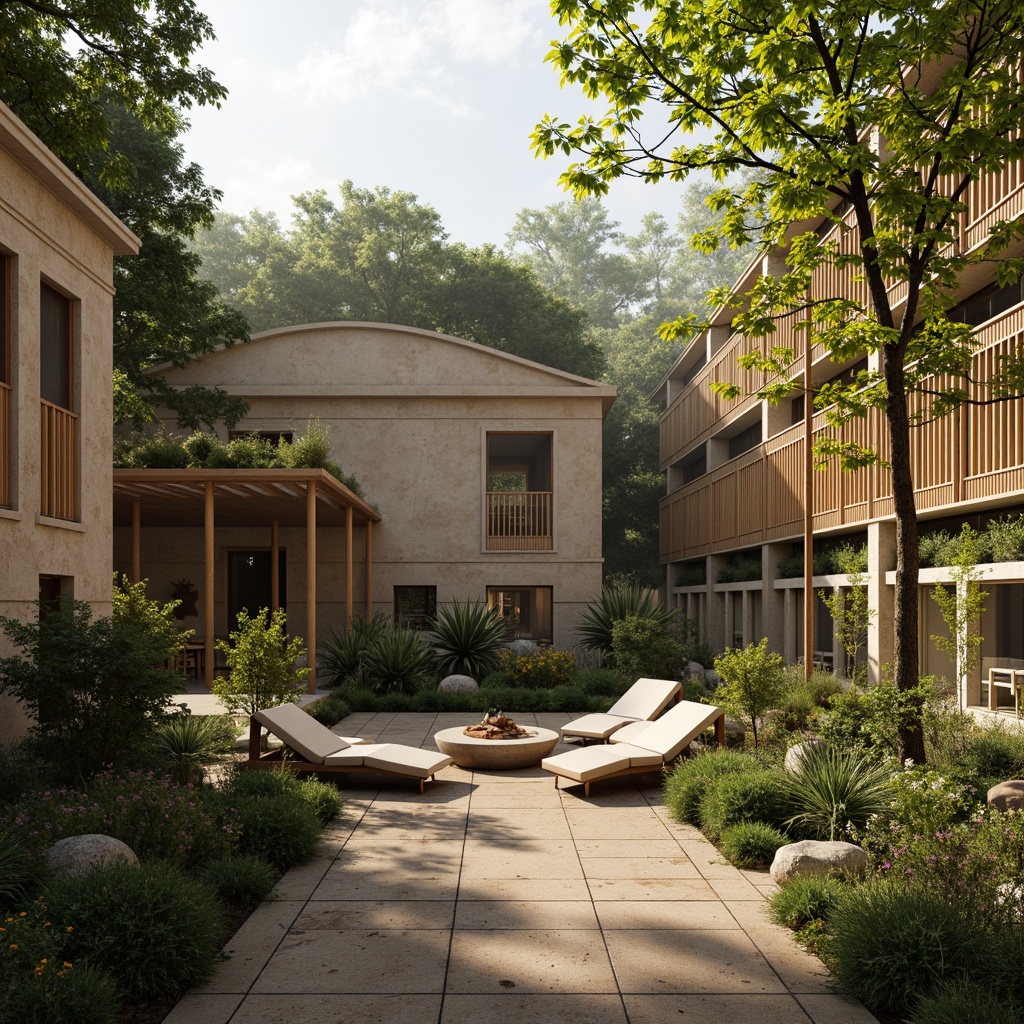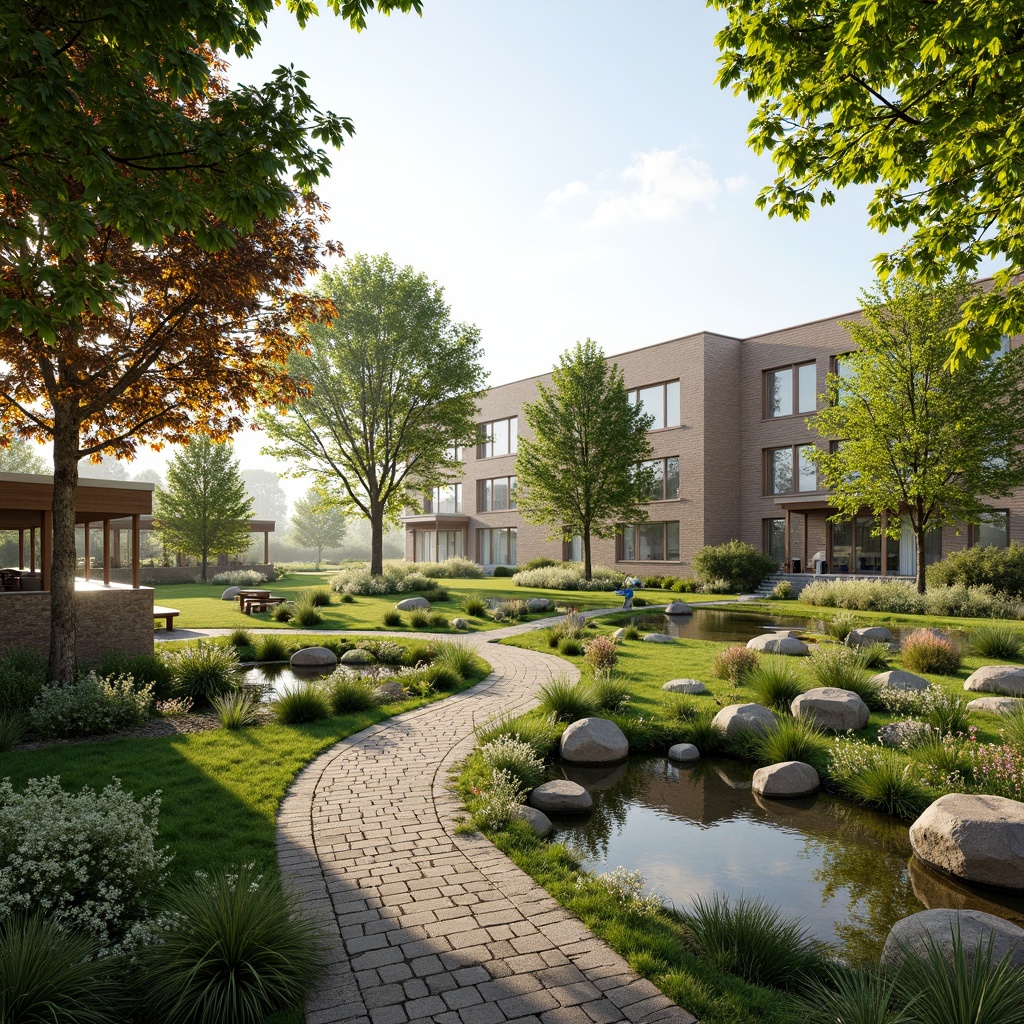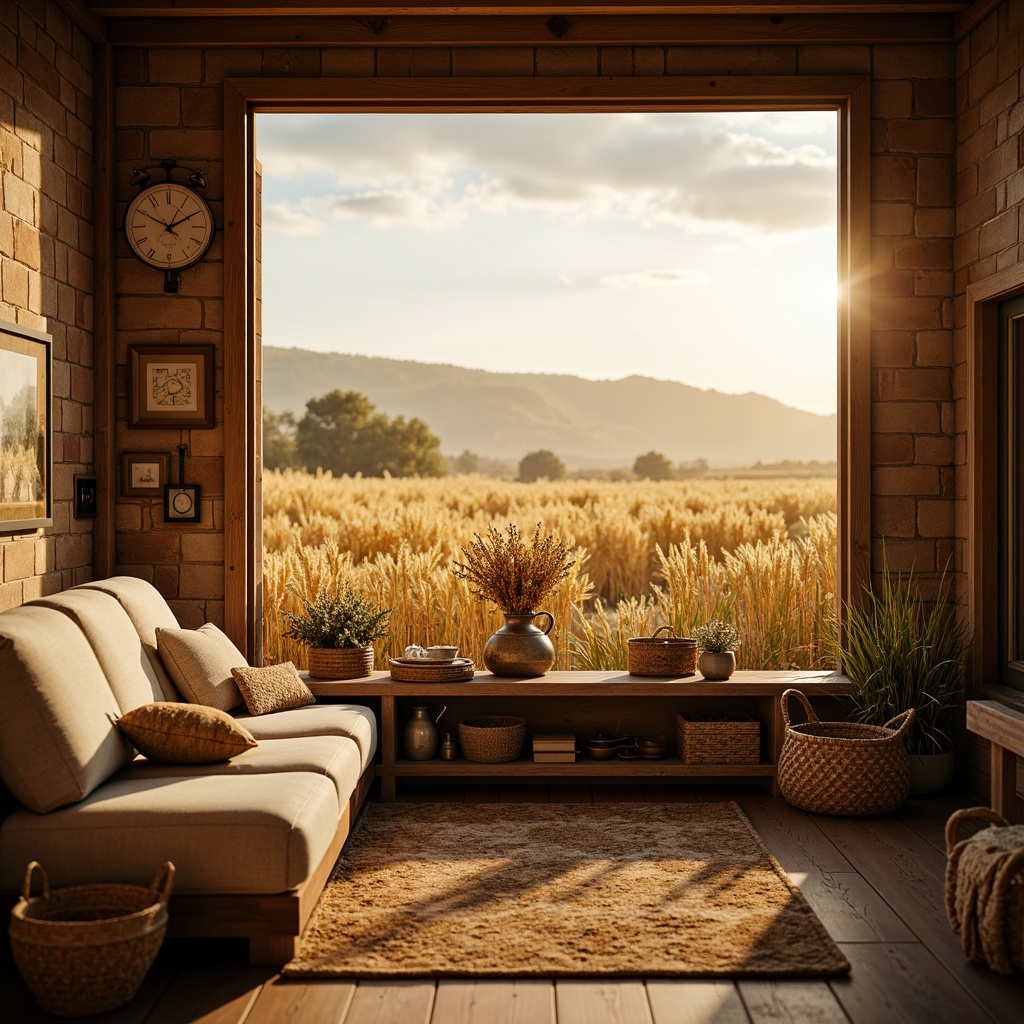दोस्तों को आमंत्रित करें और दोनों के लिए मुफ्त सिक्के प्राप्त करें
Pavilion Sustainable Architecture Design Ideas
Pavilion Sustainable Architecture represents a harmonious blend of innovation and nature. This architectural style emphasizes environmental integration, utilizing natural materials like rammed earth to create buildings that resonate with their surroundings. The wheat color palette enhances the aesthetic appeal, reflecting the desert landscape while providing thermal mass for energy efficiency. This collection of design ideas showcases how sustainable architecture can thrive in harmony with the environment, offering inspiration for future projects.
Environmental Integration in Pavilion Sustainable Architecture
Environmental integration is a key principle in Pavilion Sustainable Architecture. This approach ensures that buildings are not just structures, but part of the ecosystem. By using designs that respect natural contours and local climates, architects can create spaces that enhance the landscape rather than disrupt it. This integration fosters biodiversity and enhances the overall health of the environment, making it a critical consideration for sustainable architecture.
Prompt: Eco-friendly pavilion, green roof, solar panels, rainwater harvesting system, natural ventilation, organic curves, reclaimed wood structures, living walls, lush vegetation, native plants, butterfly garden, bird's nest, educational signs, interactive exhibits, circular walkways, natural stone floors, warm lighting, soft shadows, 1/1 composition, shallow depth of field, panoramic view, realistic textures, ambient occlusion.Let me know if you need any adjustments!
Prompt: Eco-friendly pavilion, curved green roof, solar panels, rainwater harvesting system, natural ventilation, bamboo flooring, recycled metal walls, living walls, lush greenery, native plants, bio-diverse ecosystem, serene forest surroundings, warm sunny day, soft diffused lighting, 1/1 composition, intimate focus, realistic textures, ambient occlusion.
Utilizing Natural Materials in Architecture Design
The use of natural materials, such as rammed earth, is fundamental in Pavilion Sustainable Architecture. These materials not only reduce the carbon footprint but also provide a unique aesthetic that blends seamlessly with the surrounding environment. Rammed earth offers durability and insulation, making it an excellent choice for buildings in desert regions, where temperature fluctuations can be extreme. The organic nature of these materials creates a tactile connection to the landscape.
Prompt: Organic modern architecture, reclaimed wood accents, living green walls, bamboo flooring, natural stone cladding, earthy color palette, eco-friendly materials, sustainable building practices, minimalist interior design, abundant natural light, floor-to-ceiling windows, sliding glass doors, lush vegetation, serene outdoor spaces, rustic wooden decks, organic shapes, free-flowing curves, soft warm lighting, shallow depth of field, 3/4 composition, panoramic view.
Prompt: Organic farm-to-table restaurant, reclaimed wood accents, living green walls, natural stone flooring, earthy color palette, wooden beam ceilings, rustic metal decorations, potted plants, hanging botanicals, woven bamboo furniture, rattan lighting fixtures, jute rugs, minimalist decor, abundant natural light, warm soft shadows, 1/1 composition, intimate atmosphere, realistic textures, subtle ambient occlusion.
Prompt: Earthy cabin, reclaimed wooden walls, natural stone foundations, living roofs, lush greenery, solar panels, wind turbines, water conservation systems, eco-friendly materials, bamboo flooring, rattan furniture, woven textiles, organic shapes, curved lines, earthy color palette, warm ambient lighting, soft shadows, 1/1 composition, realistic textures, ambient occlusion.
Prompt: Earthy tones, reclaimed wood accents, living walls, green roofs, natural stone facades, organic shapes, bamboo flooring, woven rattan furniture, jute textiles, wicker decorations, earthy clay colors, rustic metal frames, wooden beam ceilings, natural light pouring in, warm cozy ambiance, 1/1 composition, shallow depth of field, soft diffused lighting, realistic wood textures, ambient occlusion.
Prompt: Earthy tones, organic forms, reclaimed wood accents, living green walls, natural stone fa\u00e7ades, bamboo ceilings, woven rattan furniture, earthy ceramics, botanical patterns, lush foliage, misty atmosphere, warm soft lighting, shallow depth of field, 3/4 composition, panoramic view, realistic textures, ambient occlusion.
Prompt: Eco-friendly building, reclaimed wood accents, bamboo flooring, living green walls, natural stone fa\u00e7ade, earthy color palette, organic shapes, curved lines, minimalist interior, abundant natural light, cross ventilation, passive solar design, rainwater harvesting system, gray water reuse, native plant species, lush green roof, insulated recycled glass windows, warm ambient lighting, shallow depth of field, 1/2 composition, soft focus, realistic textures.
Prompt: Earthy tones, natural stone walls, reclaimed wood accents, bamboo flooring, living green roofs, lush vegetation, organic shapes, curved lines, eco-friendly materials, sustainable design, minimalist aesthetic, warm ambient lighting, soft shadows, shallow depth of field, 1/1 composition, intimate scale, serene atmosphere, nature-inspired textures, subtle color palette.
Prompt: Earthy tone, natural stone walls, wooden accents, bamboo furnishings, green roofs, living walls, organic shapes, curved lines, minimal ornamentation, earthy color palette, warm lighting, soft shadows, natural ventilation systems, reclaimed wood, low-carbon footprint, sustainable building materials, eco-friendly design, serene atmosphere, lush vegetation, misty morning, shallow depth of field, 1/1 composition, realistic textures, ambient occlusion.
Prompt: Earthy tones, reclaimed wood accents, natural stone walls, living green roofs, bamboo flooring, organic shapes, curved lines, minimal ornamentation, earthy color palette, abundant natural light, clerestory windows, skylights, sustainable building practices, eco-friendly materials, recycled glass features, rustic metal details, water conservation systems, rainwater harvesting, native plant species, serene forest surroundings, misty morning atmosphere, soft diffused lighting, shallow depth of field, 1/2 composition.
The Role of Thermal Mass in Design
Thermal mass plays a pivotal role in Pavilion Sustainable Architecture, particularly in desert environments. By utilizing materials with high thermal mass, such as rammed earth, buildings can absorb heat during the day and release it at night, maintaining a comfortable indoor climate. This energy-efficient strategy reduces the reliance on artificial heating and cooling systems, making buildings more sustainable and cost-effective in the long run.
Prompt: \Thermal mass integration, modern architecture design, exposed concrete walls, natural stone floors, high-ceilinged spaces, large windows, clerestory windows, passive solar heating, cooling systems, thermal comfort, energy efficiency, sustainable building practices, urban planning strategies, dense cityscapes, green roofs, living walls, vibrant city life, warm sunlight, soft diffused lighting, shallow depth of field, 3/4 composition, realistic textures, ambient occlusion.\
Prompt: Exposed concrete walls, natural ventilation, passive cooling, thermal mass, high-performance insulation, double-glazed windows, shading devices, solar screens, cantilevered overhangs, green roofs, living walls, urban context, bustling streets, modern architecture, sleek lines, minimalist aesthetic, daylight harvesting, soft diffused lighting, 1/1 composition, realistic textures, ambient occlusion.
Prompt: Exposed thermal mass walls, natural stone flooring, polished concrete surfaces, high-temperature radiant heating systems, passive solar design, clerestory windows, indirect natural lighting, earthy color palette, brutalist architecture, modern industrial aesthetic, open-plan layout, minimalist decor, functional simplicity, warm ambient atmosphere, soft diffused light, shallow depth of field, 1/2 composition, realistic textures, subtle material variations.
Achieving Landscape Harmony Through Design
Achieving landscape harmony is essential in Pavilion Sustainable Architecture. This design philosophy encourages the creation of buildings that complement their surroundings. By considering factors such as topography, vegetation, and existing ecosystems, architects can design spaces that feel like an extension of the natural world. This approach not only enhances the beauty of the architecture but also promotes a sense of peace and connection with nature.
Prompt: Serenely curved pathways, lush green grasslands, vibrant blooming flowers, natural stone walls, wooden benches, tranquil ponds, gentle water features, rustic bridges, modern minimalist architecture, large windows, sliding glass doors, eco-friendly materials, sustainable design solutions, warm sunny day, soft diffused lighting, shallow depth of field, 3/4 composition, panoramic view, realistic textures, ambient occlusion.
Exploring the Wheat Color Palette in Design
The wheat color palette is a defining characteristic of Pavilion Sustainable Architecture. This warm, earthy tone resonates with the desert landscape, creating a visually appealing and cohesive look. By using colors that reflect the local environment, architects can ensure that their designs blend seamlessly with the surroundings. This palette not only enhances the aesthetic quality of the buildings but also contributes to their thermal performance.
Prompt: Warm wheat fields, golden hues, soft beige tones, natural textures, organic shapes, earthy atmosphere, rustic charm, vintage accents, distressed wood, woven baskets, linen fabrics, sun-kissed landscape, rolling hills, peaceful ambiance, warm sunny day, soft focus, 1/1 composition, realistic rendering, ambient occlusion.
Prompt: Earthy wheat fields, warm golden hues, soft beige tones, natural textures, rustic wooden accents, vintage farm equipment, distressed stone walls, cozy country atmosphere, morning sunlight, shallow depth of field, 1/1 composition, realistic grain details, ambient occlusion.
Prompt: Warm wheat fields, golden harvest, rustic farmhouses, natural earthy tones, beige stucco walls, sun-kissed terrain, weathered wooden accents, soft warm lighting, shallow depth of field, 3/4 composition, panoramic view, realistic textures, ambient occlusion, vintage farmhouse decor, distressed wood furniture, woven wicker baskets, jute rugs, natural linen fabrics, earthy ceramic vases, organic botanical illustrations.
Prompt: Warm wheat fields, soft golden hues, earthy tones, natural textures, rustic farmhouse, vintage decor, cozy living room, plush furniture, woven baskets, distressed wood accents, sun-kissed landscape, rolling hills, serene atmosphere, warm lighting, shallow depth of field, 1/1 composition, realistic renderings, ambient occlusion.
Prompt: Warm wheat fields, golden harvest, rustic earth tones, beige stucco buildings, natural stone foundations, weathered wood accents, cozy farmhouses, vintage metal roofs, soft sunset lighting, shallow depth of field, 1/1 composition, inviting outdoor spaces, woven wicker furniture, jute rugs, linen textiles, earthy ceramics, organic forms, handcrafted details, serene rural landscapes.
Conclusion
Pavilion Sustainable Architecture offers a unique approach to building design that emphasizes environmental integration and the use of natural materials. This style not only enhances the aesthetic appeal of structures but also promotes sustainability through effective energy management and landscape harmony. By incorporating principles such as thermal mass and thoughtful color palettes, architects can create spaces that are not only beautiful but also beneficial to the environment.
Want to quickly try pavilion design?
Let PromeAI help you quickly implement your designs!
Get Started For Free
Other related design ideas




